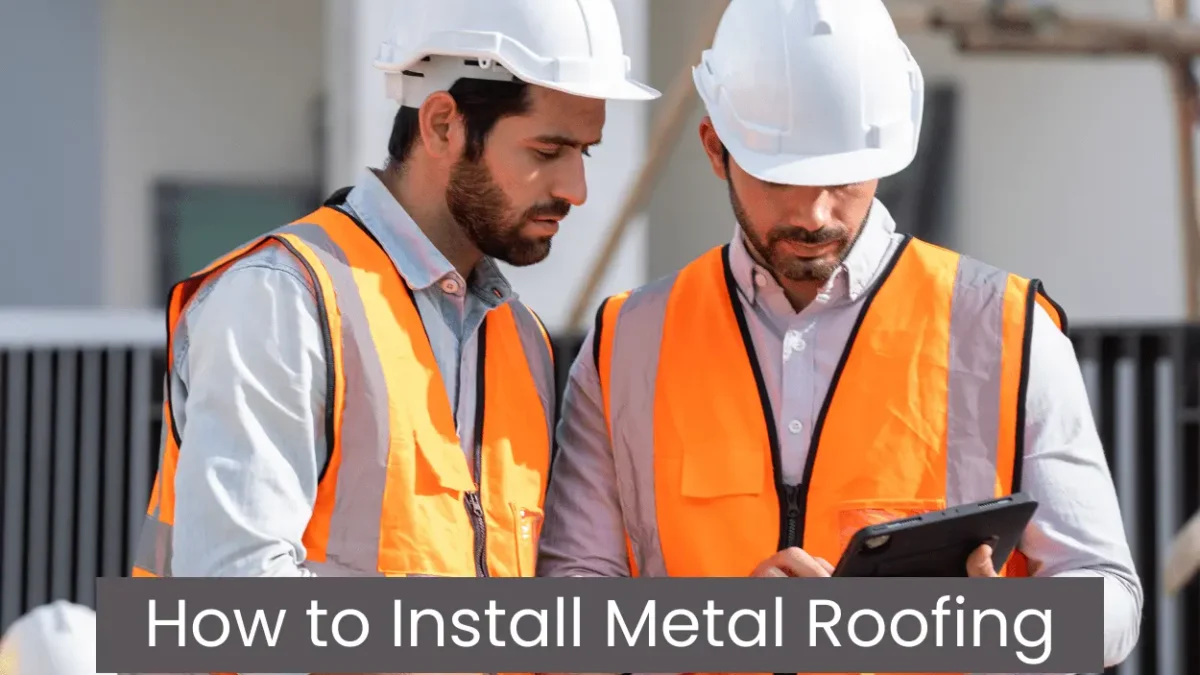Metal roofing is a popular choice for homeowners who want a durable, attractive, and energy-efficient roof. Metal roofing can last for decades, withstand harsh weather conditions, and reflect heat and light. However, installing metal roofing over plywood requires some preparation and care, as plywood is a wood-based material that can be affected by moisture, temperature, and expansion. In this blog, we will show you how to install metal roofing over plywood in four easy steps, and answer some common questions about this process.
Step 1: Inspect and Repair the Plywood
The first step in installing metal roofing over plywood is to inspect the plywood for any damage, such as rot, warping, cracking, or holes. You should replace any damaged plywood with new sheets of the same thickness and quality. You should also make sure that the plywood is at least 15/32 inches thick, and that it is securely attached to the roof trusses or rafters. You should also remove any nails, screws, or staples that are sticking out from the plywood, as they can interfere with the metal roofing installation.
Step 2: Install the Underlayment and the Slip Sheet
The second step in installing metal roofing over plywood is to install the underlayment and the slip sheet. The underlayment is a layer of roofing felt or synthetic material that provides insulation, moisture protection, and soundproofing for your metal roof. The slip sheet is a layer of smooth building paper that protects the underlayment from sticking or tearing due to the metal roofing.
To install the underlayment, you should roll out the felt or synthetic material over the plywood, starting from the bottom edge of the roof and working your way up. You should overlap each row by at least 6 inches, and cut the underlayment around any vents, pipes, or other protrusions. You should also secure the underlayment with roofing nails or staples, about 12 inches apart.
To install the slip sheet, you should roll out the building paper over the underlayment, following the same pattern and direction. You should overlap each row by at least 2 inches, and cut the slip sheet around any vents, pipes, or other protrusions. You do not need to secure the slip sheet with nails or staples, as it will be held in place by the metal roofing.
Step 3: Install the Metal Roofing Panels
The third step in installing metal roofing over plywood is to install the metal roofing panels. You should choose the type, style, and color of metal roofing that suits your preference and budget. You should also measure and mark the roof to ensure that the panels are aligned and spaced evenly. You should also cut the panels to fit the roof dimensions, using metal snips or a circular saw with a metal-cutting blade.
To install the metal roofing panels, you should start from the bottom, left corner of the roof, and work your way up and across. You should overlap the edge of the roof by about 1 inch, and leave a gap of about 2 inches between the panels and the ridge cap. You should also use self-tapping screws with rubber washers to secure the panels to the plywood, about 12 to 16 inches apart. You should also use a screw gun with an adjustable clutch to avoid overdriving or underdriving the screws.
Step 4: Install the Ridge Cap and Other Accessories
The fourth and final step in installing metal roofing over plywood is to install the ridge cap and other accessories, such as vents, skylights, chimneys, or gutters. The ridge cap is a metal piece that covers the ridge of the roof, where the two slopes meet. The ridge cap should be installed over the metal roofing panels, overlapping them by at least 6 inches on each side. You should also use self-tapping screws with rubber washers to secure the ridge cap to the panels, about 12 inches apart. You should also seal the edges and joints of the ridge cap with a high-quality metal roof sealant.
The other accessories, such as vents, skylights, chimneys, or gutters, should be installed according to the manufacturer’s instructions, and should be flashed and sealed properly to prevent leaks and damage. You should also use compatible materials and fasteners for the accessories, to avoid galvanic corrosion or other issues.
Conclusion
Installing metal roofing over plywood is a relatively simple and affordable way to upgrade your roof and enhance your home’s appearance and value. However, you need to follow the proper steps and use the right materials to ensure a successful and long-lasting installation. You also need to check the local building codes and regulations before installing metal roofing over plywood, as some areas may have specific requirements or restrictions.
If you are not confident or experienced in installing metal roofing over plywood, we recommend that you hire a professional roofing company or a metal roofing contractor like Metal Roofing Spokane to do the job for you. A professional roofer can ensure that your metal roof is installed correctly and safely, and can provide you with a warranty and a guarantee for their work.


